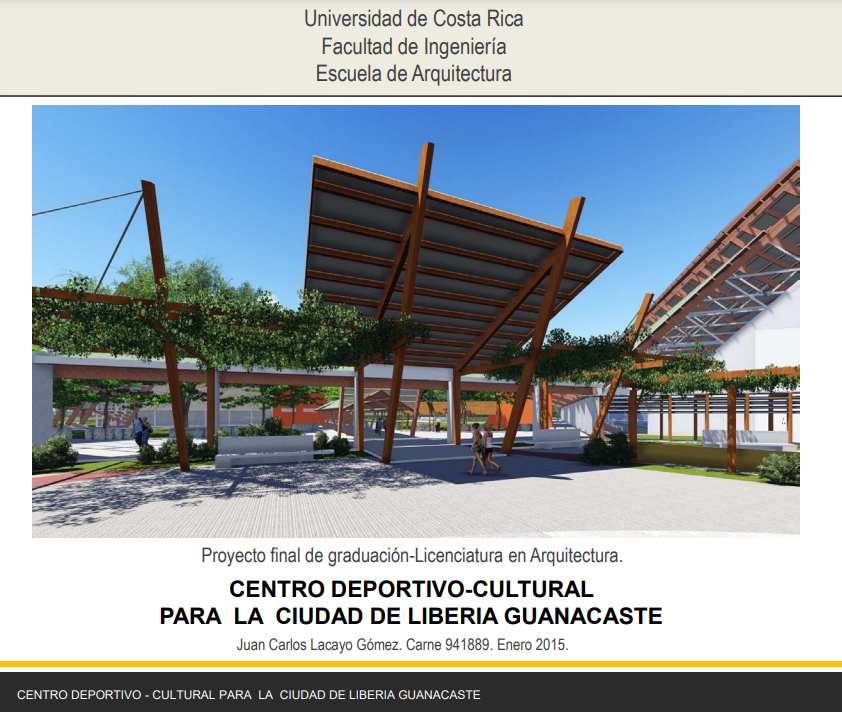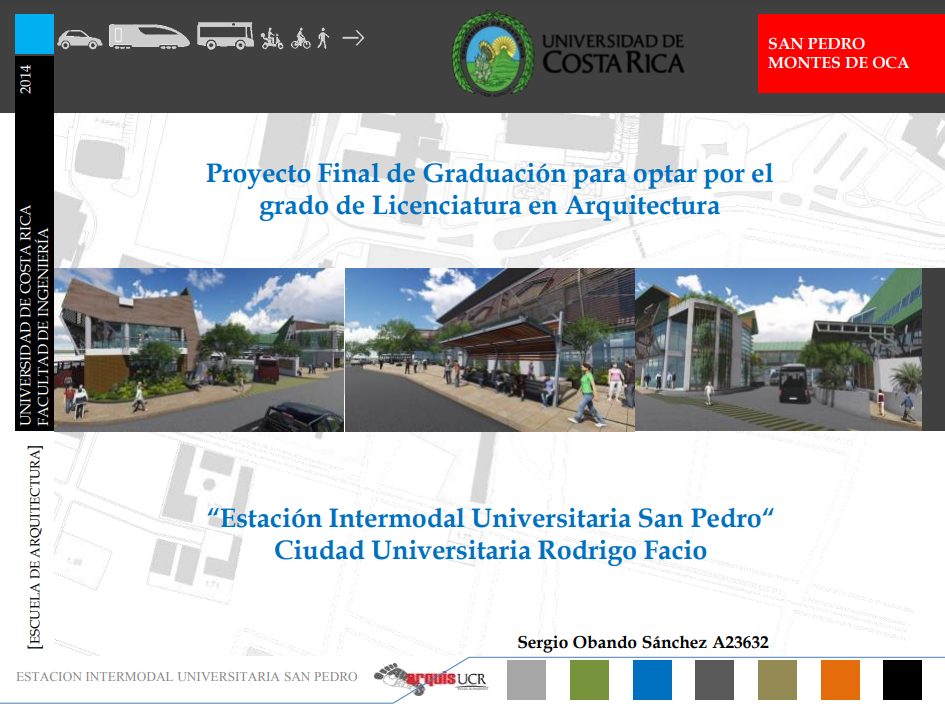Summary
The development of the prototype school unidocente to Costa Rica involves the study and analysis of the theoretical elements of educational spaces, strategies, passive climate comfort, and language use patterns as a way to address the final design. Through the theory are determined by characteristics of the learning spaces and how these should be formed both in terms of student learning, such as in support of the teacher and the teaching methodology that this choose to use, without that space is a constraint to be able to apply it. In the same way the strategies passive climate comfort are applied to achieve a pleasant environment even under different weather conditions, both heat and cold, thus mitigating the most of their effects, so that they can positively influence the learning process. With the use of strategies passive avoids the use of mechanical systems, which, among other benefits, reduces the power consumption in this type of schools under budget, and serving as an example of how to use the available natural resources in a design more user-friendly with the environment. Through the language of patterns deals with the design of the prototype, establishing different patterns that each element of the school must meet in order to support the learning of children. It also takes account of the need for a modular design, able to adapt to different circumstances of various sites across the country. Finally, the prototype completed is implemented in three sites with different climates, with the aim of seeing his ability to adapt to the circumstances, not only climatic but also of the requirements of local regulations and national, size and shape of lots of schools unidocentes existing vernacular architecture, among other aspects. Finally, the prototype completed is implemented in three sites with different climates, with the aim of seeing his ability to adapt to the circumstances, not only climatic but also of the requirements of local regulations and national, size and shape of lots of schools unidocentes existing vernacular architecture, among other aspects.



